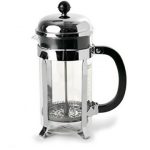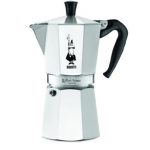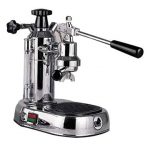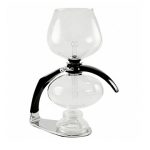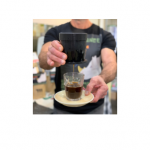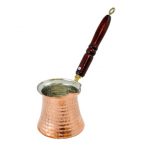“Espresso a global phenomena. It is the pressure sensitive extraction that amplifies the intensity of all the tasting elements found in this amazing art ‘espresso’.”
– Paul Mannassis
Espresso coffee originated in Italy and was generally consumed standing at the bar. Although many nations have introduced espresso to their culture, none have been able to successfully replicate the stand up espresso bars found throughout Italy. This culture still remains strong in Italy till today. In and out. Express quick.
The coffee grains are placed in a metal filter holder and firmly tamped. Water is preheated to approximately 94 – 98 deg. Celsius in a boiler and is forced through the coffee grains at around 8-9 bars of pressure by a mechanical pump or spring loaded piston found in earlier models. The liquor produced in this coffee maker has a beautiful golden “crema”, an intense aroma and a strong full flavour with sufficient body to prepare real cappuccino’s, cafe’ latte’s, e.tc. The coffee grains texture actually restricts the water flow until the pressured hot water consistently works its way through extracting the flavour, aroma and body. Hence a fine grind is more suitable (not pulverised). The boiler produces ample steam for texturing milk when preparing creamy cappuccinos, silky smooth caffe’ latte’s, macchiato’s, flat white’s etc…
The coffee grains texture is the most influencing factor in preparing an espresso and will determine the viscosity of the liquor which suspends all the dissolved solids containing essential oils, flavours and aromas.
It is very important to ensure the correct water temperature and pressure is used as well as the correct amount of coffee. When filling the baskets regardless of size ensure they are filled with a gap of about 4mm from the levelled surface of the tamped coffee grains and the rim of the filter basket. This ensures that once the pressure is activated, it will force its way evenly through the coffee grains and extract all the richness, essential flavours, aroma and leave a nice golden coloured “crema”. If however the gap between the ground coffee surface and the shower is too large or the grind is too coarse, the preheated water will pass through the grains quicker resulting in a poorly extracted espresso with a very undesirable taste and a pale thin crema. Too fine a grind or excessive heat will leave a light coloured circle on the crema and an over extracted bitterness. A 30ml espresso should be extracted between 25-30 seconds.
The electric espresso machine consists of a number of parts:
- The unit itself containing the boiler, steam wand, group head, pump/lever and water tank.
- The handle.
- The single and double filter basket.
This type of espresso maker comes complete with two filter baskets. A shallow basket for 1 cup and deeper filter basket for 2 cups.


